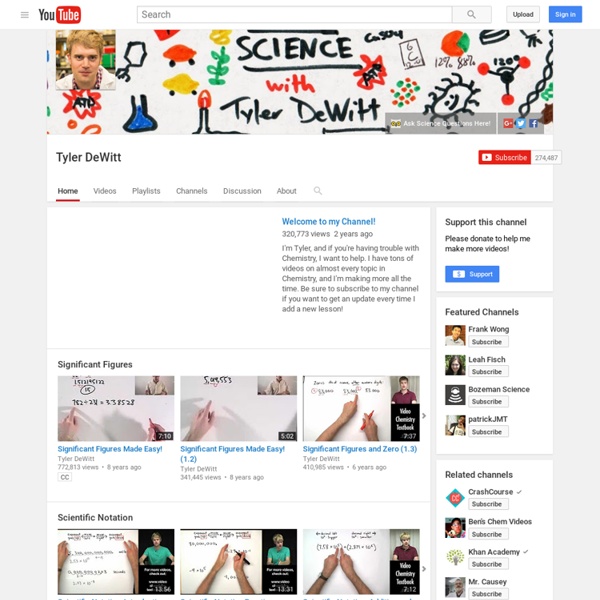



Educational Videos and Games for Kids about Science, Math, Social Studies and English Kemi - www.matnat.org Vissa ord är lätta att blanda ihop för att de stavas snarlikt. Här nedan ges några vanliga exempel på när man bör hålla tungan rätt i munnen vid stavning. Glukos - GlykolGlukos är en hexos och en aldos, det vill säga en monosackarid och en enkel sockerart. Hydroxid - HydroxylHydroxid är den minusladdade jonen OH- som är stark bas och det man mäter vid pOH. Bensen - BensinBensen är ett aromatiskt kolväte med sex kolatomer i hexagonal (ringformad) struktur. Kolväte - KolhydratKolväten är organiska molekyler uppbyggda av kol och väte. Fragment - FraktionFragment kan vara en del av en molekyl som bildas vid masspektrometri (MS) innan fragmenten analyseras med avseende på storlek och laddning.Fraktion är en del av en lösning som samlats i ett kärl vid till exempel vätskekromatografi (HPLC). Grupp - Funktionell gruppEn grupp brukar avse en grupp i det periodiska systemet, till exempel alkalimetallerna, halogenerna eller ädelgaserna.
ChemCollective: Concept Tests Our concept tests use qualitative multiple choice questions to assess the understanding of key chemical concepts. (Please email us for answers and suggested classroom uses). Thermochemistry Energy and Enthalpy Thermodynamics Concept Test Concept tests that can be used as part of in-class activities to help students reason about energy and work. Equilibrium LeChatlier's Principle Chemical Equilibria Concept Test These equilibrium based concept tests can be used as part of in-class activities to help students reason about equilibrium concepts. Progress of Reaction Chemical Equilibria Concept Test These equilibrium based concept tests can be used as part of in-class activities to help students reason about equilibrium concepts. Equilibrium Calculations Chemical Equilibria Concept Test These equilibrium based concept tests can be used as part of in-class activities to help students reason about equilibrium concepts.
Chemistry Help - Wyzant Lessons In our chemistry help section, you’ll find a broad range of topics from very basic chemistry all the way through some more advanced organic chemistry topics. Browse our chemistry topics below, or contact one of our chemistry tutors for private help. Heuristics Before you get into the other topics, learning HOW to learn chemistry is a great place to start, and this section will help. The Periodic Table Almost everyone has heard of the periodic table, but do you know how to read it? history of the periodic table, and explains how elements are divided and grouped in the table. Elements Take a deep dive on every element on the periodic table. Solutions Mixtures and solutions may seem to have a lot in common, but they’re actually very different. States of Matter Matter has a variety of different states, ranging from gases to solids. Compounds What are the different bonds and how do you create a compound? Reactions Let’s learn more about writing simple chemical equations and types of reactions. Gases
Grant Thompson Call it "Mad Science", or just a "Quest for Discovery". These are some of my experiments, and "Random Weekend Projects" Subscribe! New videos every week! WARNING: In many cases, these projects are dangerous and pose risks of personal, or property damage, injury, and in some cases, death. There are some mind-blowing loopholes in this version of life, that for some reason, haven't been issued a patch. I make weekly videos dedicated to exploring life through all kinds of projects, experiments, and real-world life-hacking. Every project is a completely different adventure, and occasionally you'll see an experiment that probably shouldn't be duplicated at all.
If atoms are mostly empty space, why do objects look and feel solid? Chemist John Dalton proposed the theory that all matter and objects are made up of particles called atoms, and this is still accepted by the scientific community, almost two centuries later. Each of these atoms is each made up of an incredibly small nucleus and even smaller electrons, which move around at quite a distance from the centre. If you imagine a table that is a billion times larger, its atoms would be the size of melons. But even so, the nucleus at the centre would still be far too small to see and so would the electrons as they dance around it. So why don’t our fingers just pass through atoms, and why doesn’t light get through the gaps? To explain why we must look at the electrons. Electrons ‘dance’ In fact, electrons dance – there is no better word for it. These patterns can vary – some are slow and gentle, like a waltz whereas some are fast and energetic, like a Charleston. Although electrons never tire, moving up to a faster step does take energy. Resistance when touched
Quimitube Toda la Química de 2º de Bachillerato y Selectividad ChemCollective Chemistry Interactive Video Animations Chemistry Based Animations These animations support the teaching of concepts in chemistry in freshman through graduate level courses. Some of the QuickTime movie are without audio, and some of the audio--from a few of the sound augmented QuickTime movie--has been stripped and made available in Real Audio's streaming audio format. Animations By Thomas G. Delights of Chemistry Chemical Reaction Animations Chemistry Quicktime Multimedia Animated Catalytic reactions, Interesting Molecules, Explosive Chemistry, Multimedia Chemistry. Chemistry Video Collection Chemistry comes alive! Videos (Journal of Chemical Education) Educational Materials in Organic Chemistry Quicktime Animations organized by Lecture Topic University of Arizona Acids, Alkalis and Neutralization Litmus Reactions, Universal Indicator Reactions, Neutralization Aqueous Equilibrium Animations Atom Builder Build a carbon atom out of quarks and electrons, but watch out for radioactive decay. Atom Builder You Try It Chemical Bonds